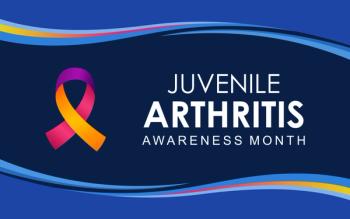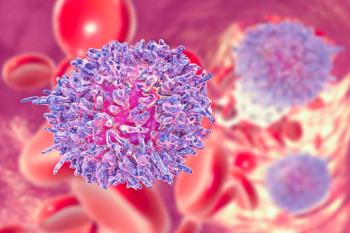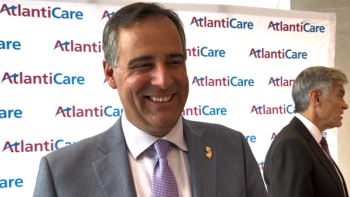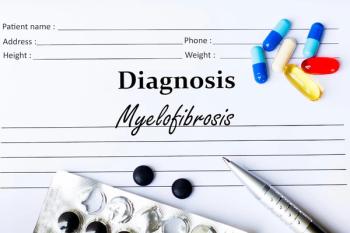
Investigators found certain classes of prescriptions were also associated with outcomes, though they do not believe the association is necessarily a causal one.

Investigators found certain classes of prescriptions were also associated with outcomes, though they do not believe the association is necessarily a causal one.

Nurses enhance chronic kidney disease (CKD) care by implementing a palliative CKD care framework, addressing barriers, and promoting patient-centered supportive strategies globally.

Real-world data suggest anti-TNF biosimilars for juvenile idiopathic arthritis offer comparable efficacy and safety to their brand name counterparts.

Noting the profound impact of living with a chronic condition that constantly reminds patients of their "patient" status, Andrew Kuykendall, MD, Moffitt Cancer Center, emphasizes the importance of therapies that can offer a sense of normalcy.

The newly FDA-approved linvoseltamab (Lynozyfic; Regeneron) may improve access to multiple myeloma treatment by offering an off-the-shelf, outpatient option that can be administered in community settings, according to Sundar Jagannath, MBBS.

Quality of life in people living with HIV was lower in those who had weight gain from adherence to antiretroviral therapy.

The study aims to build an accurate, interpretable model for stage III colorectal cancer prognosis.

Elevated levels of per- and polyfluoroalkyl substances (PFAS), also known as “forever chemicals,” may be associated with metabolic disruptions potentially leading to type 2 diabetes.

Improving health literacy is essential for promoting health equity, reducing preventable illness, and making health care more effective.


The FDA approved pegcetacoplan (EMPAVELI; Apellis Pharmaceuticals) as the first treatment for patients 12 years and older with the rare, severe kidney diseases C3 glomerulopathy (C3G) and primary immune complex membranoproliferative glomerulonephritis (IC-MPGN).

With limited treatment options and potential for admission to the intensive care unit, researchers of a new paper highlighted the importance of discussing goals and initiating palliative care early on.

This global study found rising rates of pediatric hypertension, highlighting obesity's impact and the need for improved monitoring and prevention strategies.

The American Society for Preventive Cardiology (ASPC) Congress on Cardiovascular Disease Prevention features multiple sessions on different methods of treating and preventing cardiovascular disease, including through the use of artificial intelligence (AI) and glucagon-like peptide-1 (GLP-1) receptor agonists.

Social risk factors significantly increase the likelihood of developing long COVID, highlighting the urgent need for equitable health care and support systems.

Michael McGuire, PharmD, reviewed Mental Health America’s recent publication on the current state of mental health in America and addressed socioeconomic barriers in access to care.

Patients with chronic spontaneous urticaria experience inadequate symptom control and significant emotional burdens despite various treatment approaches, highlighting an urgent need for more effective and sustained therapies to improve their quality of life.

Hadar Avihai Lev-Tov, MD, asserts that advancements in teledermatology and artificial intelligence (AI)–powered diagnostic tools are crucial for improving health care efficiency and patient access within managed care.

A comprehensive US analysis showed that progress in multiple myeloma survival has not been shared equally, with significant disparities persisting despite improved therapies.

New data showed a survival advantage with newer chronic lymphocytic leukemia (CLL) treatments for older patients who are typically underrepresented in clinical trials.

The primary end point in PREVAIL is Myasthenia Gravis-Activities of Daily Living total score improvement from baseline, and the secondary end points are Quantitative Myasthenia Gravis total score and Myasthenia Gravis Composite total score.

While physical activity was linked with improved quality of life (QOL), the majority of patients are not given the recommendation from their doctor.

Some hospitals in New Jersey may be eligible for part of the $50 billion CMS spending on rural health care, according to State Sen Vincent Polistina (R, New Jersey).

The study found that atrial fibrillation (AF) significantly increases stroke and mortality risk in certain patients with myeloproliferative neoplasms (MPNs).

Disparities in access to quality treatment and lack of equitable and inclusive data in breast cancer research contribute to poorer survival outcomes for Black women with breast cancer.

At the Society for Pediatric Dermatology Annual Meeting, Sarah Coates, MD, FAAD, highlights how social drivers shape pediatric skin health and how clinicians can respond.

Two posters presented at the Society for Pediatric Dermatology's Annual Meeting explore the psychological toll and potential nutritional approaches for managing vitiligo in children and adolescents.

Early-onset breast cancer was associated with hormone therapy usage in younger women in a recent study.

With obesity rates rising sharply, the American Academy of Pediatrics calls for multimodal strategies to address the crisis in youth.

A new survey reveals widespread consumer frustration with prior authorization, highlighting the need for urgent reform in insurance coverage.

259 Prospect Plains Rd, Bldg H
Cranbury, NJ 08512
© 2025 MJH Life Sciences®
All rights reserved.
